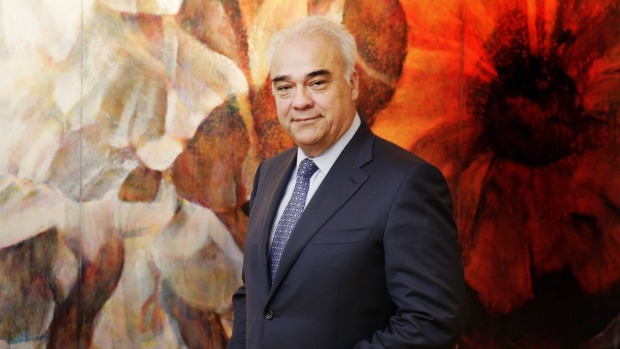
Primary Health Care chief executive Peter Gregg took the reins in March. Photo: Jessica Hromas
A scaled back tax refund and worries about how Primary Health Care can afford to attract and retain doctors in future has spooked investors, who pushed down the stock by as much as 11 per cent during trading.
Investors were responding to a shock downgrade to earnings guidance released on Wednesday afternoon after the market closed. The company had also clarified a recent decision by the Australian Tax Office.
The stock closed the day 42¢, or 8 per cent, lower at $4.77, down from a 12-month high of $5.50 in March. Prior to the slump, Primary shares had gained 11 per cent in the past year, compared with a 34 per cent rise in the value of healthcare stocks in the S&P/ASX 200.
Primary said its earlier guidance of a one-off tax refund of $130 million would more likely come in at about $50 million.
The revision came after Primary said it would assume the tax liability for doctors who were affected by the ATO ruling about how Primary should treat the cost of “practice acquisitions”. These are essentially upfront payments of about $450,000 made to lock doctors into five-year contracts.
The ATO said these payments should be treated as revenue, as opposed to capital.
This allows Primary to treat them as a tax deduction, but means doctors will pay more tax on them (at the level of income tax, rather than capital gains tax).
The company has hinted at changing its doctor remuneration model, which has traditionally been the upfront payment plus a 50:50 share of billings.
On Thursday, analysts said such a move looked more likely, given the ATO ruling but also the expectation that new chief executive Peter Gregg would tweak Primary’s strategy.
“Primary plans to evolve its proposition on more flexible grounds, for instance a higher payout ratio . . .,” UBS analyst Andrew Goodsall wrote to clients. “We rate this as plausible in the context of increases in net doctor supply and evolution of Primary strategy.”
Mr Gregg took the reins in March after founding managing director Ed Bateman stepped down because of illness.
After the initial ATO ruling in June, the company said it intended “to adopt more flexible commercial arrangements with healthcare practitioners”.
Primary declined to comment further on Thursday.
Goldman Sachs analyst Ian Abbott said although Primary had an “attractive and market-leading footprint” in its medical centre business, the outlook for the division was uncertain.
Mr Abbott said the upfront payments put pressure on cash flow, but if Primary shifted to providing a higher share of billings to doctors it would put pressure on profit margins.
Primary blamed its lowering of earnings guidance in part on lower patient volumes because of a mild cold and flu season and extreme weather in NSW.
It told the market to expect earnings before interest, tax, depreciation and amortisation for 2014-15 to be flat at about $400 million.
Previous guidance was for EBITDA between $410 million and $425 million.
Citi analyst Victor Windeyer said the average expectation among analysts had been $415 million.
Underlying earnings per share would also go backwards by 5 per cent, the company said, despite previously forecasting they would rise by between 5 per cent and 12 per cent.
